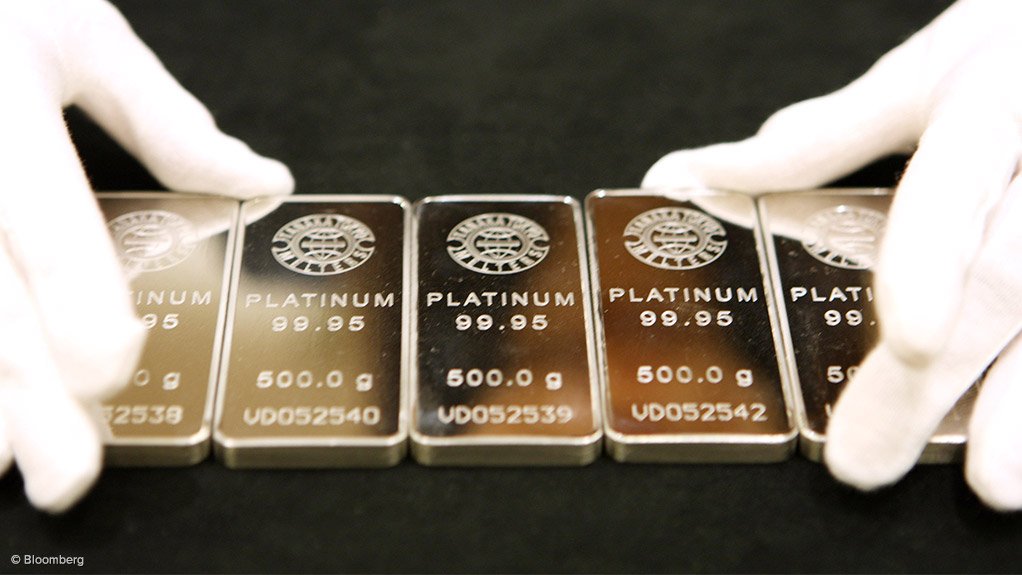SA deprived of platinum’s full potential




IAAN MYBURGH Companies are reining in on exploration expenditure
GERT KRIEL The future of the PGMs sector remains uncertain
MINIMAL CONTRIBUTION The mining industry has, over the past few months, seen soaring production costs and declining demand for platinum resources
Photo by Bloomberg
The platinum-group metals (PGMs) sector will continue to contribute minimally to South Africa’s economy unless the lack of alignment between govern- ment and the industry is addressed, says professional services firm Venmyn Deloitte.
The majority of the current challenges facing South Africa’s PGMs sector can be attributed to the sector’s stakeholders – comprising mining companies, government and labour – being aligned to varying and sometimes conflicting interest groups, Venmyn Deloitte mineral project analysts Iaan Myburgh and Gert Kriel tell Mining Weekly.
“South Africa has a strategic advantage, owing to the bulk of PGM resources being available here. However, the country will continue to lose out on the PGM sector’s potential contribution to the total economy unless the lack of alignment between government and industry is addressed,” explains Myburgh.
In the course of 2013, Mining Weekly reported on several areas of tension between the Department of Mineral Resources and mining companies.
One such report was in January, when Mineral Resources Minister Susan Shabangu described global diversified mining company Anglo American as an “errant child” after a public spat between government and the miner’s platinum division Anglo American Platinum (Amplats).
This came after Amplats’ announcement, without consultation, that it would retrench 14 000 employees last year, which evoked outcries from government and labour unions.
By October, however, the platinum miner had reworked its retrenchment and restructuring plan to ensure that only 3 300 employees were granted early retire- ment or voluntary separation packages.
Further, of these 3 300 employees, the company retained about 1 250 employees for a six-month period to undertake reclamation activities at the Khuseleka 2 shaft and the Khomanani 1 and 2 shafts.
“As a result of these retrenchment avoidance measures, no employees will be retrenched,” commented Amplats CEO Chris Griffith at the time.
Nevertheless, Myburgh and Kriel cite salary increments demanded by labour as challenging, and many analysts have described them as impossible for mining companies to match.
Analysts have attributed these high salary demands to the ongoing battle for member- ship between veteran mining union the National Union of Mineworkers (NUM) and relative newcomer the Association of Mineworkers and Construction Union (Amcu).
At the time of going to print, Northam Platinum’s Zondereinde platinum mine employees – the majority of whom are NUM members – were demanding an average wage increase of 16% and a 69% increase in their living-out allowance, which the company insists it cannot afford.
Kriel and Myburgh argue that these challenges, despite other mining sectors worldwide facing similar challenges, have especially been a hindrance to South Africa’s PGMs sector.
Other Challenges
The mining industry has, over the last few months, seen soaring production costs and declining demand for PGM resources. This has prompted some companies to cut back on their budgets.
“Companies are reining in on exploration expenditure. Currently, supply exceeds demand. This ought to be changed; supply needs to be cut back to increase the price to sustainable levels. Companies should focus on rightsizing their operations and chasing profitable ounces,” advises Kriel.
Still, the beginning of 2014 has seen stabilisation in the PGMs sector, as there is a marked increase in the market price. While the price of platinum was at a low of $1 325 on December 20, it rose to $1 419 by January 9.
“Share prices in major PGM producers are recovering from the mid-year lows in 2013, but are still trading sideways, down from their 24-month highs,” Myburgh elaborates.
The analysts warn, however, that this should not be regarded as an indication of a market recovery of the resource.
“The increase in demand can be attributed to many mining companies closing for maintenance during December, so when they reopen in January, demand is met from a stockpile.
“Further, the companies are operating at net losses and producing similar ounces to those produced in 2012,” explains Kriel.
Myburgh adds that, as the world’s largest platinum producer, South Africa’s uncertain PGMs sector affects the sector’s global performance. “At its current low prices, South Africa is subsidising the rest of the world with cheap platinum. Even with the current deficit in the platinum market, we don’t expect US dollar prices to rebound to the $1 500/oz mark in the near term.”
The weakening South African rand will provide some relief for platinum producers; however, this will also impact on input costs, specifically relating to energy, he explains.
Kriel notes that the future of the PGMs sector remains uncertain.
“We cannot be sure how long South African producers will be able to sustain production on the back of the low commodity prices and rising costs. Companies tend to go into survival mode, cutting back especially on exploration expenditures just to remain afloat – but time will tell for how long they will remain afloat,” highlights Myburgh.
Myburgh and Kriel further attest that, in the current economy, demands for higher salaries will not be met easily.
“Margins in the industry are already thin and any unexpected increases in labour costs and disruptions in production – either as a result of industrial action or for any other reason – will make it difficult to remain profitable.
“Further, South Africa has most of the world’s platinum and chrome resources. These mineral resources should be seen as strategic and government should carefully look at ways of protecting the mineral resources industry in South Africa, specifically in the platinum industry,” concludes Myburgh.
Comments
Press Office
Announcements
What's On
Subscribe to improve your user experience...
Option 1 (equivalent of R125 a month):
Receive a weekly copy of Creamer Media's Engineering News & Mining Weekly magazine
(print copy for those in South Africa and e-magazine for those outside of South Africa)
Receive daily email newsletters
Access to full search results
Access archive of magazine back copies
Access to Projects in Progress
Access to ONE Research Report of your choice in PDF format
Option 2 (equivalent of R375 a month):
All benefits from Option 1
PLUS
Access to Creamer Media's Research Channel Africa for ALL Research Reports, in PDF format, on various industrial and mining sectors
including Electricity; Water; Energy Transition; Hydrogen; Roads, Rail and Ports; Coal; Gold; Platinum; Battery Metals; etc.
Already a subscriber?
Forgotten your password?
Receive weekly copy of Creamer Media's Engineering News & Mining Weekly magazine (print copy for those in South Africa and e-magazine for those outside of South Africa)
➕
Recieve daily email newsletters
➕
Access to full search results
➕
Access archive of magazine back copies
➕
Access to Projects in Progress
➕
Access to ONE Research Report of your choice in PDF format
RESEARCH CHANNEL AFRICA
R4500 (equivalent of R375 a month)
SUBSCRIBEAll benefits from Option 1
➕
Access to Creamer Media's Research Channel Africa for ALL Research Reports on various industrial and mining sectors, in PDF format, including on:
Electricity
➕
Water
➕
Energy Transition
➕
Hydrogen
➕
Roads, Rail and Ports
➕
Coal
➕
Gold
➕
Platinum
➕
Battery Metals
➕
etc.
Receive all benefits from Option 1 or Option 2 delivered to numerous people at your company
➕
Multiple User names and Passwords for simultaneous log-ins
➕
Intranet integration access to all in your organisation





















